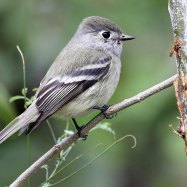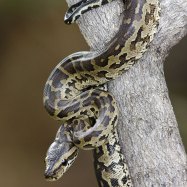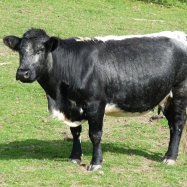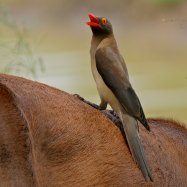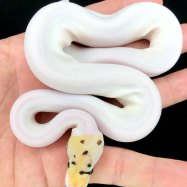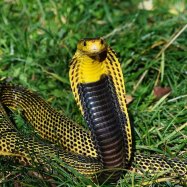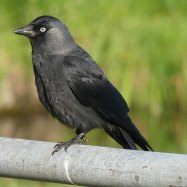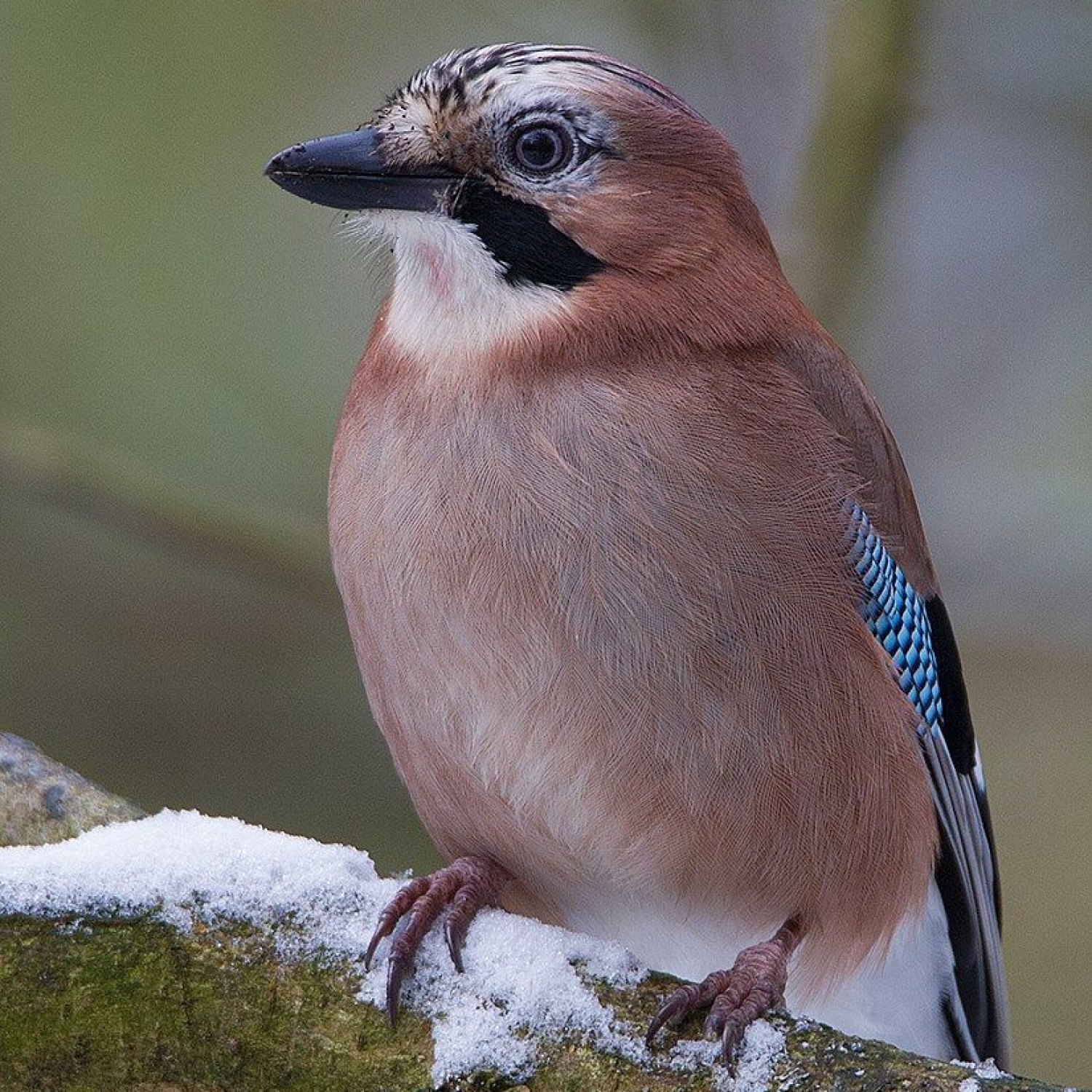
Eurasian Jay
34-38 cm
The Eurasian Jay is a medium-sized, robust bird commonly found throughout Europe. With a body length of 34-38 cm and belonging to the Corvidae family, it is known for its striking blue and black feathers. These intelligent birds are masters of mimicry and can imitate a variety of sounds, making them a delightful addition to any bird-watching experience. #EurasianJay #BirdWatching #Corvidae
Animal Details Summary:
Common Name: Eurasian Jay
Kingdom: Animalia
Habitat: Woodlands, parks, gardens
The Majestic Eurasian Jay: Exploring the Diversity of This Colorful Bird
The Eurasian Jay, also known as Garrulus glandarius, is a stunning bird that is found across Europe and western Asia, with its origins rooted in the United Kingdom. Belonging to the Animalia kingdom and the Chordata phylum, this beautiful bird falls under the class Aves, making it a close relative of other birds such as the ravens, crows, and magpies.However, don't let its classification fool you. The Eurasian Jay possesses unique features and characteristics that set it apart from its corvid cousins Eurasian Jay. From its vibrant coloration, versatile feeding habits, to its presence in diverse habitats, this bird is truly a fascinating creature worth exploring.
Let's dive deeper into the world of the Eurasian Jay and discover the allure of this mesmerizing bird.
Appearance and Coloration
Standing at 34-38 cm in length, the Eurasian Jay is a medium-sized bird that possesses a robust body shape. Its overall appearance is a sight to behold, as it proudly sports a multicolored plumage that is both eye-catching and distinctive.On the bird's head is a striking crown, known as a crest, which is commonly grey in color. A black mask extends from the bird's bill to its eyes, giving it a mysterious and alluring appearance. The rest of its body is predominantly a light pinkish-brown color, with white, black, and blue hues displayed on its wings and tail feathers.
What's fascinating about the Eurasian Jay's coloration is that it can vary depending on its environment and location. For instance, birds living in Mediterranean regions tend to have a softer color palette, whereas those found in colder regions have a more vibrant and robust coloration Eagle.
It's safe to say that the Eurasian Jay makes quite the fashion statement with its unique and ever-changing coloration.
Habitat and Geographical Distribution
The Eurasian Jay is a highly adaptable bird, and as such, can be found in a variety of habitats. From woodlands and forests to parks and gardens, this bird has learned to thrive in various environments.However, its preferred habitat is woodlands, where it can easily find shelter and food. This bird is also a fan of open areas with scattered trees, making it a common sight in rural and suburban areas.
Geographically, the Eurasian Jay can be found throughout Europe, but its distribution extends to western Asia as well. In Europe alone, you can spot this bird in almost every country, making it a well-known and beloved species across the continent.
Feeding Method
Unlike its corvid counterparts, the Eurasian Jay is an omnivorous bird, meaning it feeds on both plant and animal matter. Its diet consists of a variety of foods, including insects, fruits, seeds, nuts, and even small birds and rodents.But what's truly remarkable about this bird is its intelligence when it comes to food. The Eurasian Jay has been observed storing food for later consumption. It does this by hiding seeds and nuts in the ground, creating a hidden food stash for itself in case of scarcity.
This clever behavior has earned the Eurasian Jay the nickname "nature's greatest hoarder." Additionally, the bird's strong beak allows it to open acorns and pine cones with ease, adding to its versatile feeding habits.
Social Structure
The Eurasian Jay is a social bird, often seen in small groups or pairs. While these birds are not territorial, they can become aggressive during the mating season. It's also common for young birds to remain with their parents for a while, even after they have fledged.Within its social groups, the Eurasian Jay is known to engage in playful and affectionate behaviors, such as grooming each other and sharing food. These interactions help build strong bonds within the group and ultimately contribute to the bird's overall survival.
Importance in the Ecosystem
Like many other birds, the Eurasian Jay also plays an essential role in the ecosystem. By dispersing seeds through its food storage behavior, this bird helps with plant reproduction and plays a crucial part in the forest's regeneration.Furthermore, the Eurasian Jay also helps control insect populations, making it a natural and vital pest controller in its habitat.
Threats and Conservation Efforts
While the Eurasian Jay's population is currently stable, there are still some threats to this bird's survival. Habitat loss due to deforestation and urbanization, along with hunting, are the primary contributing factors to the decline of this species.However, various conservation efforts are in place to protect this beautiful bird, such as improving forest management practices and creating artificial nest boxes to increase breeding success.
Fun Facts about the Eurasian Jay
- In addition to their distinctive coloration, Eurasian Jays are also known for their loud and harsh calls, which they use to communicate with each other.- These birds are incredibly resourceful and have been observed using tools to forage for food, such as using twigs to extract insects from tight spaces.
- Eurasian Jays are incredibly vocal birds, with over 40 different calls identified. They even have a specific call for when they discover food.
- The Eurasian Jay's feathers are highly sought after by Native American tribes, who use them to create headdresses and other ceremonial garments.
In Conclusion
In conclusion, the Eurasian Jay is a remarkable bird, both in appearance and behavior. Its multicolored plumage, versatile feeding habits, and social nature make it a charming and captivating species.From its widespread distribution across Europe and western Asia to its crucial role in the ecosystem, this bird is truly a testament to the wonders of nature. As we continue to learn and appreciate these stunning creatures, let's also do our part in protecting and preserving the Eurasian Jay and all the other birds that call our world home.

Eurasian Jay
Animal Details Eurasian Jay - Scientific Name: Garrulus glandarius
- Category: Animals E
- Scientific Name: Garrulus glandarius
- Common Name: Eurasian Jay
- Kingdom: Animalia
- Phylum: Chordata
- Class: Aves
- Order: Passeriformes
- Family: Corvidae
- Habitat: Woodlands, parks, gardens
- Feeding Method: Omnivorous
- Geographical Distribution: Europe and western Asia
- Country of Origin: United Kingdom
- Location: Throughout Europe
- Animal Coloration: Multicolored
- Body Shape: Medium-sized, robust
- Length: 34-38 cm
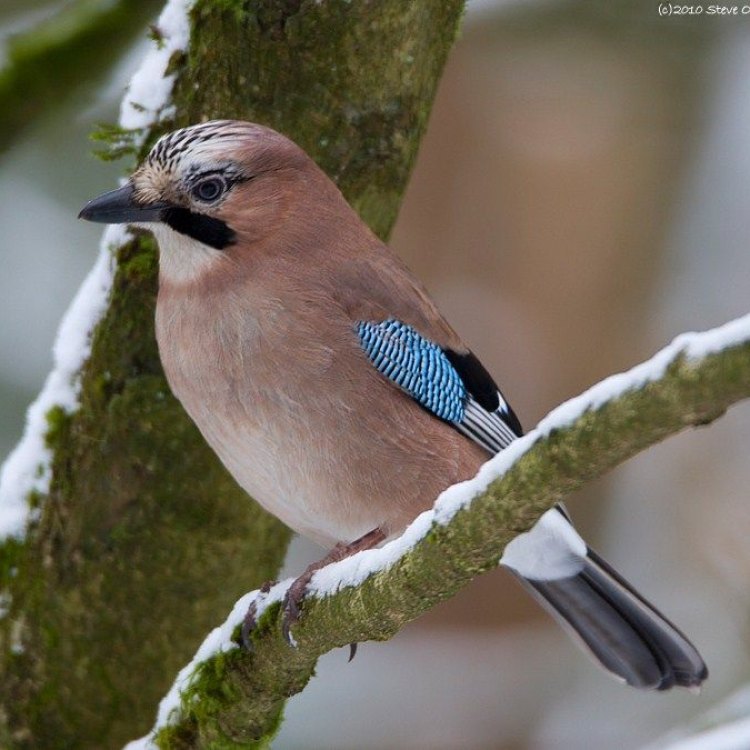
Eurasian Jay
- Adult Size: Medium-sized
- Average Lifespan: 7 years
- Reproduction: Sexual
- Reproductive Behavior: Monogamous
- Sound or Call: Harsh screeching
- Migration Pattern: Migratory and sedentary populations
- Social Groups: Small family groups
- Behavior: Intelligent and curious
- Threats: Habitat loss, predation
- Conservation Status: Least Concern
- Impact on Ecosystem: Seed dispersal
- Human Use: Hunted for meat and feathers
- Distinctive Features: Brightly colored plumage, black crest
- Interesting Facts: Can mimic other birds' calls
- Predator: Birds of prey

Garrulus glandarius
The Fascinating and Intelligent Eurasian Jay: A Key Player in Ecosystems
When we think of birds, we often conjure images of majestic eagles soaring through the sky or vibrant tropical parrots. However, there is one bird that may not be as well-known but is just as fascinating – the Eurasian Jay.The Eurasian Jay, also known as the "jaybird," is a medium-sized member of the crow family, endemic to Eurasia. They are often overlooked due to their tendency to stay hidden in dense foliage, but their vibrant appearance and intelligent behavior make them a species worth getting to know PeaceOfAnimals.Com.
Let's delve into the characteristics that make the Eurasian Jay a unique and integral part of ecosystems.
An Adult Size That is Not Too Big or Too Small
Firstly, the Eurasian Jay falls into the medium-sized category of birds, growing up to 13-14 inches in length and weighing around 150-200 grams. Their size allows them to be agile and able to maneuver through dense vegetation, making them expert foragers.They have a distinctive pinkish-red color in their rump, creating a striking contrast against their grayish-blue wings and black tail feathers. Their head is adorned with a black crown, and they have a black stripe through their eyes, giving them a masked appearance. The combination of these colors makes them stand out in the forest, making them easily recognizable.
A Surprising Average Lifespan
The Eurasian Jay may not live as long as some of its larger counterparts, but it still boasts an average lifespan of 7 years. This may not seem like a lot, but for a bird of its size, it is quite impressive. Unfortunately, due to habitat loss and predation, their lifespan in the wild may even be shorter Eastern Woodrat.A Reproductive Behavior that Fosters Monogamy
The Eurasian Jay has a sexual mode of reproduction and forms monogamous pairs during the breeding season. They are highly territorial and will fiercely defend their nesting site and the area surrounding it. Once mated, both the male and female jay will work to build their nest, which consists of twigs, leaves, and moss, lined with feathers and fur.During the mating process, the male will bring food offerings to the female as part of their courtship. Once the female lays her eggs, both parents take on the responsibility of incubating and caring for the young.
A Harsh Screeching Call That is Impossible to Miss
The Eurasian Jay has a distinct call, a harsh screeching sound that can sometimes be mistaken for a predator. They use this call to communicate with other jays and to alert other animals to potential dangers. Their ability to use different calls for different situations is a testament to their intelligence.Migratory or Sedentary: Profiles of Population Groups
The Eurasian Jay population can either be migratory or sedentary, depending on their geographic location. In countries with harsh winters, such as Norway and Sweden, they migrate south to find milder weather. However, in more temperate regions, they remain sedentary and adapt to the changing seasons.Small but Mighty Social Groups
The Eurasian Jay is a social bird, mostly living in small family groups consisting of a breeding pair and their offspring. They are known to be territorial, and each group will have their own territory, which they will fiercely defend. However, during the winter months, when food is scarce, jays may gather in larger groups to forage.The Intelligent and Curious Behavior of Eurasian Jays
One of the most fascinating traits of the Eurasian Jay is its intelligence. Research has shown that they have a large hippocampus, the part of the brain associated with learning and memory, which contributes to their ability to solve problems and remember locations of food sources.Eurasian Jays have also been observed using tools to extract food, such as using a twig or leaf to scoop insects from crevices. Their curiosity is also evident when they interact with humans, often approaching them for food or items that may pique their interest.
Ongoing Threats to Habitat and Predation
Like many other species, the Eurasian Jay's habitat is being threatened by human activities such as deforestation, urbanization, and agriculture. This loss of habitat not only affects the jays but also disrupts the ecosystems they are a part of. They are also at risk of predation from birds of prey, such as hawks and owls, which are their main predators.Least Concern Conservation Status, But at What Cost?
The Eurasian Jay is currently classified as "Least Concern" on the IUCN Red List, which means their population is stable. However, this is not a cause for complacency as their population is still at risk due to ongoing threats. Conservation efforts are needed to protect their habitats and ensure their survival.The Impact of Eurasian Jays on Ecosystems
Despite their small size, Eurasian Jays play a crucial role in ecosystems. Their diet consists of insects, seeds, and fruits, making them important seed dispersers, which contributes to reforestation and maintaining plant diversity. Furthermore, their nesting sites provide shelter and nesting material for other bird species.A Species Hunted for Meat and Feathers
Historically, Eurasian Jays were hunted for both their meat and their colorful feathers, which were used for decorative purposes. This practice still exists in some parts of their range, but their population has not been significantly affected.Distinctive Features that Make Them Stand Out
The Eurasian Jay has some distinctive features that set it apart from other bird species. Firstly, their brightly colored plumage makes them stand out in their natural habitat, allowing for easy identification. They also have a black crest on their head, which they can raise or lower depending on their mood or to intimidate predators.Can Mimic Other Birds' Calls: A Fun Fact That Will Impress You
Another fascinating fact about the Eurasian Jay is their ability to mimic other bird species' calls, similar to a mockingbird. They do this to confuse potential predators or to defend their territory against other birds. However, they are not as skilled at this as their American counterpart, the Blue Jay, but it is still an impressive feat.Predators that Pose a Threat to Eurasian Jays
As mentioned earlier, birds of prey, such as hawks and owls, are the main predators of Eurasian Jays. However, they are also at risk of predation from other animals, including squirrels and cats.The Benefits of Protecting the Eurasian Jay
Conservation efforts for the Eurasian Jay not only protect the species but also have a positive impact on ecosystems. By protecting their habitats, we are preserving valuable seed dispersers and maintaining biodiversity. Furthermore, their intelligence and curious behavior make them a fascinating species to study, providing valuable insights into bird behavior and cognition.In conclusion, the Eurasian Jay may not be the most well-known bird species, but it possesses unique characteristics that make it a valuable and vital part of ecosystems. From their colorful plumage and intelligent behavior to their role in seed dispersal and mimicry abilities, this bird is truly a remarkable species that deserves our respect and protection. Let us strive to appreciate and preserve the Eurasian Jay and all it adds to our natural world.
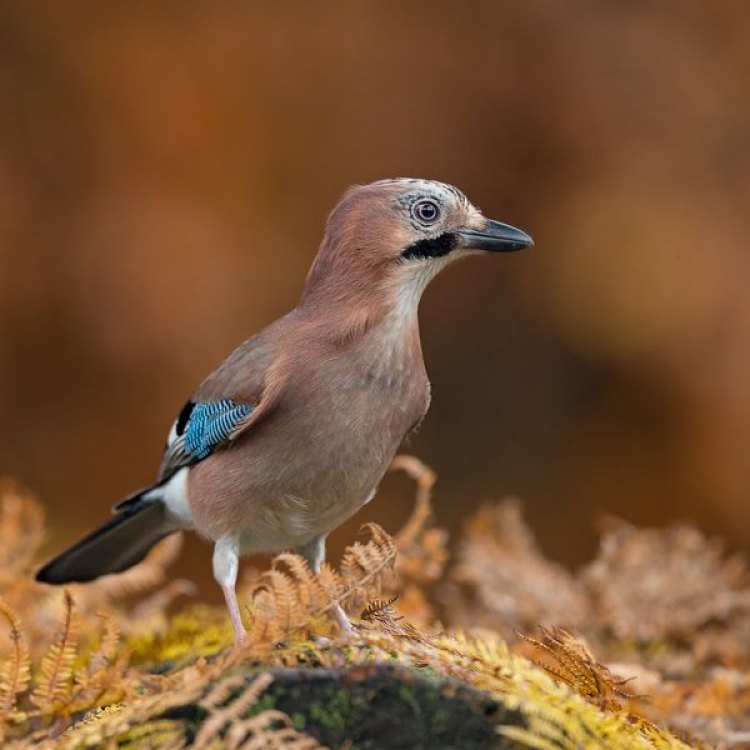
The Majestic Eurasian Jay: Exploring the Diversity of This Colorful Bird
Disclaimer: The content provided is for informational purposes only. We cannot guarantee the accuracy of the information on this page 100%. All information provided here may change without prior notice.


